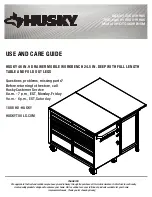Data Availability and Performance
13
Note:
The optional battery backup unit must be present in the
CHALLENGE RAID chassis for systems using cache to ensure that data is
committed to disk in the event of a power failure.
Data Reconstruction and Rebuilding After Disk Module
Failure
All RAID levels except RAID-0 provide data redundancy: the storage system
reads and writes data from and to more than one disk at a time. Also, the
system software writes parity information that lets the array continue
operating if a disk module fails. When a disk module in one of these RAID
levels fails, the data is still available because the SP can reconstruct it from the
surviving disk(s) in the array.
Data rebuilding occurs when
•
a hot spare is available
•
the failed disk module is replaced with a new disk module
If a disk module has been configured (bound) as a hot spare, it is available
as a replacement for a failed disk module. (See “RAID Hot Spare” later in
this chapter.) When a disk module in any RAID level except RAID-0 fails, the
SP automatically writes to the hot spare and rebuilds the group using the
information stored on the surviving disks. Performance is degraded while
the SP rebuilds the data and parity on the new module. However, the storage
system continues to function, giving users access to all data, including data
stored on the failed module.
Similarly, when a new disk module is inserted to replace a failed one, the SP
automatically writes to it and rebuilds the group using the information
stored on the surviving disks. As for the hot spare, performance is degraded
during rebuilding, but data is accessible.
The length of the rebuild period, during which the SP re-creates the second
image after a failure, can be specified when RAID levels are set and disks are
bound into RAID units. These processes are explained in “Binding Disks
Into RAID Units” in Chapter 4.


















